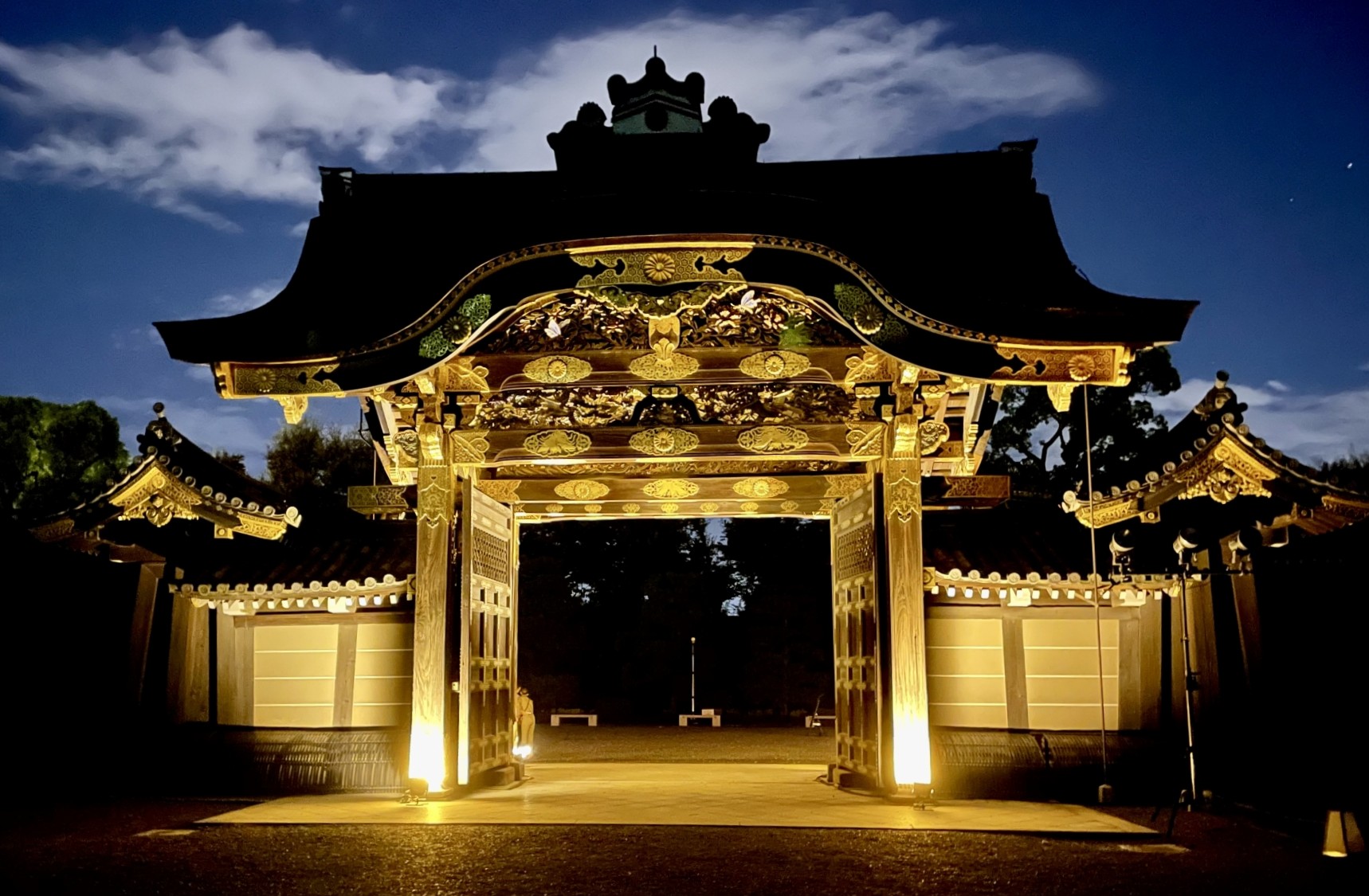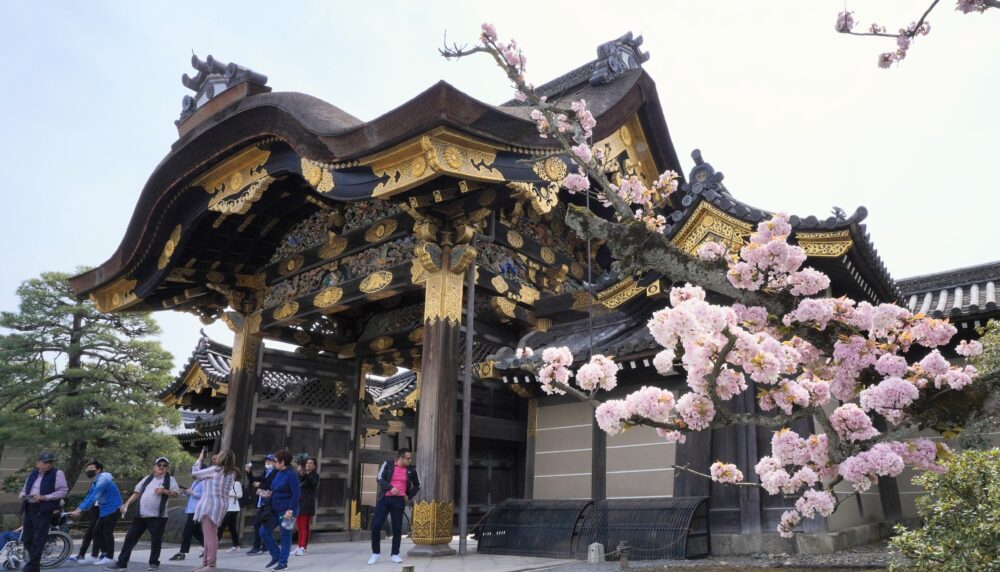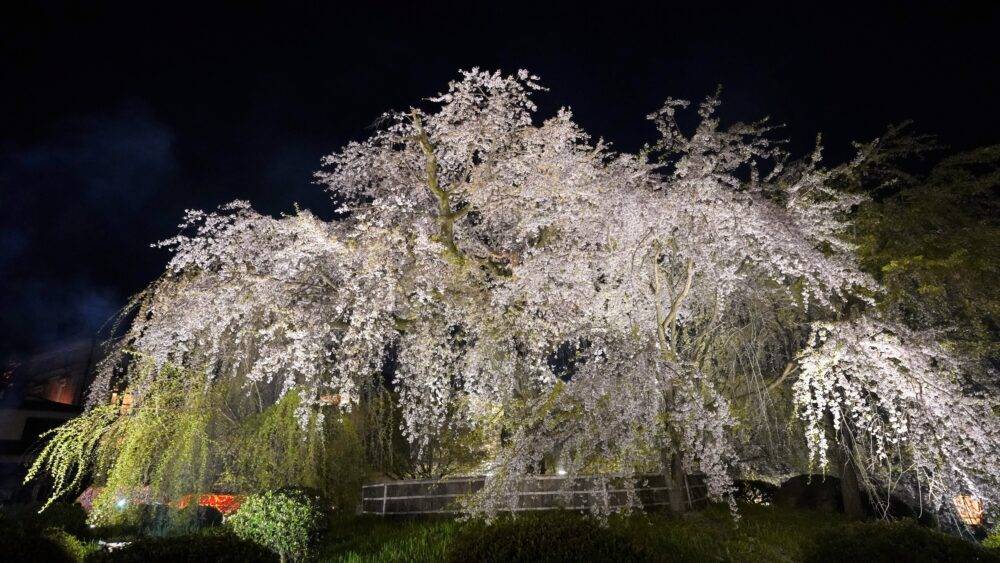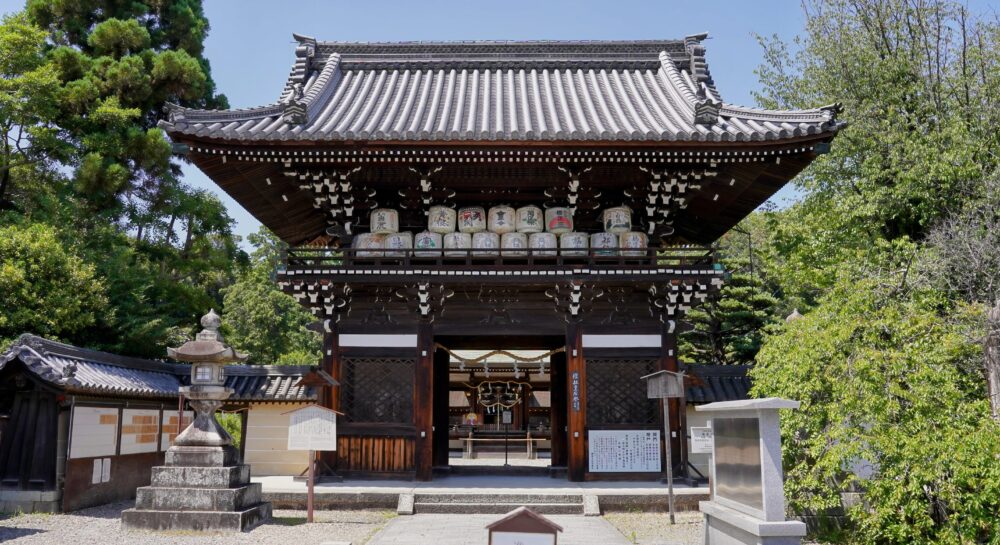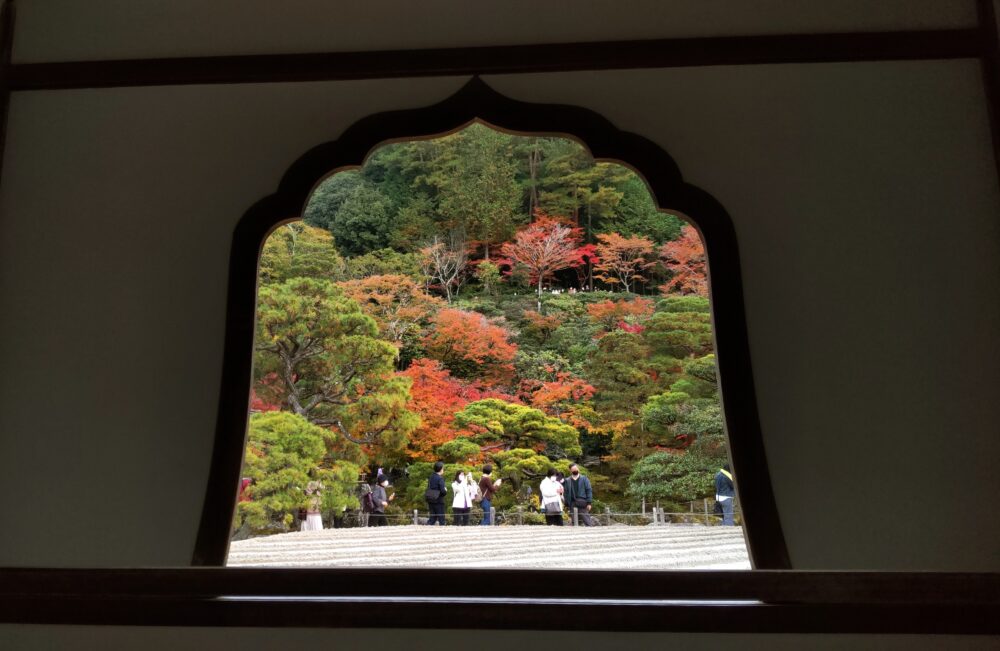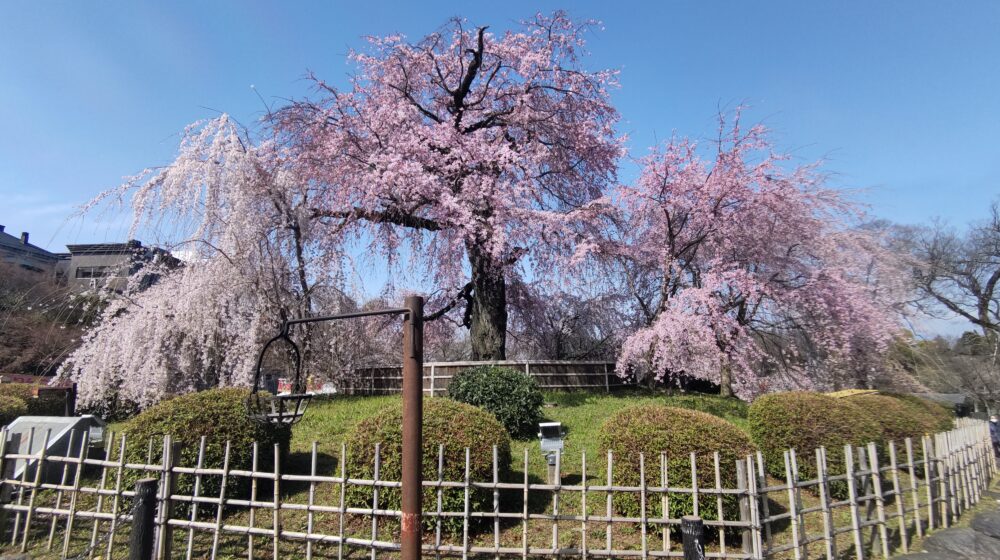Kiyomizu-dera temple: History and Features
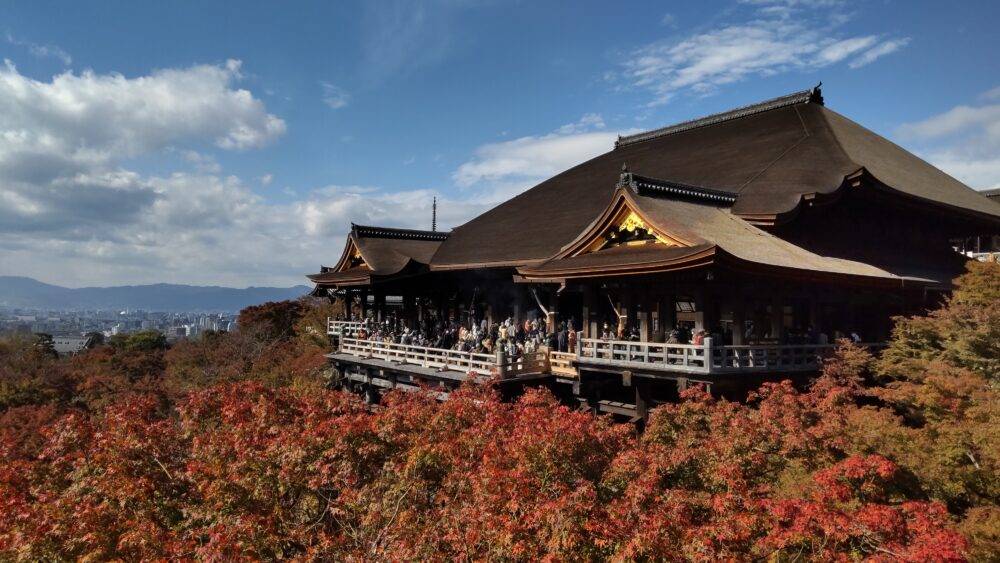
Kiyomizu-dera Temple is one of the most popular tourist attractions in Kyoto, Japan. Located in the eastern part of Kyoto, in the Higashiyama district, the temple is the main temple of the Kita-Hosso sect of Buddhism with a history of over 1200 years.
This temple has historical buildings, temple treasures, and trees that bloom with flowers every season. In 1994, Kiyomizu-dera Temple was inscribed on the UNESCO World Heritage List. Here are some additional details to better understand Kiyomizu-dera Temple.
History
In 778, Enchin, a monk of the Hosso sect, had a dream in which he was told to “find a place with sacred water.” Following this dream, he found a waterfall on the slopes of Mt. Otowa.
At the waterfall, Enchin met Gyoei, a hermit over 200 years old. Under his guidance, Enchin carved a statue of Kannon bodhisattva and founded the original training place that became Kiyomizu-dera Temple.
Read more…
In 780, the famous noble Sakanoue-no-Tamuramaro killed a pregnant deer which was believed to be highly nutritious at the time for the safe delivery of his wife. On his way back, he became thirsty and met Enchin at Otowa Waterfall. He was deeply moved and converted after hearing Enchin’s teachings on non-killing. As a result, In 798, with Tamuramaro’s assistance, the main hall of Kiyomizu-dera Temple was built.
The exact date of the construction of the Kiyomizu-dera stage is unknown, but there is a diary entry that mentions Fujiwara Narimichi (1097-1160) playing Kemari (a traditional Japanese football game) on the Kiyomizu-dera stage. This indicates that the stage existed at least before the time he was alive.
The buildings of Kiyomizu-dera Temple have been destroyed by natural and man-made disasters about 10 times. One of the most famous incidents was the complete destruction of the temple by fire during the Onin War (a civil war in the Muromachi period) in 1469. The last fire that destroyed Kiyomizu-dera Temple was in 1629, and it has been rebuilt.
In 1994, Kiyomizu-dera Temple was registered as a UNESCO World Heritage Site due to its historical significance and valuable architecture. It is now a popular tourist destination and attracts visitors from all over the world.
Features
Temple gate”Niomon”
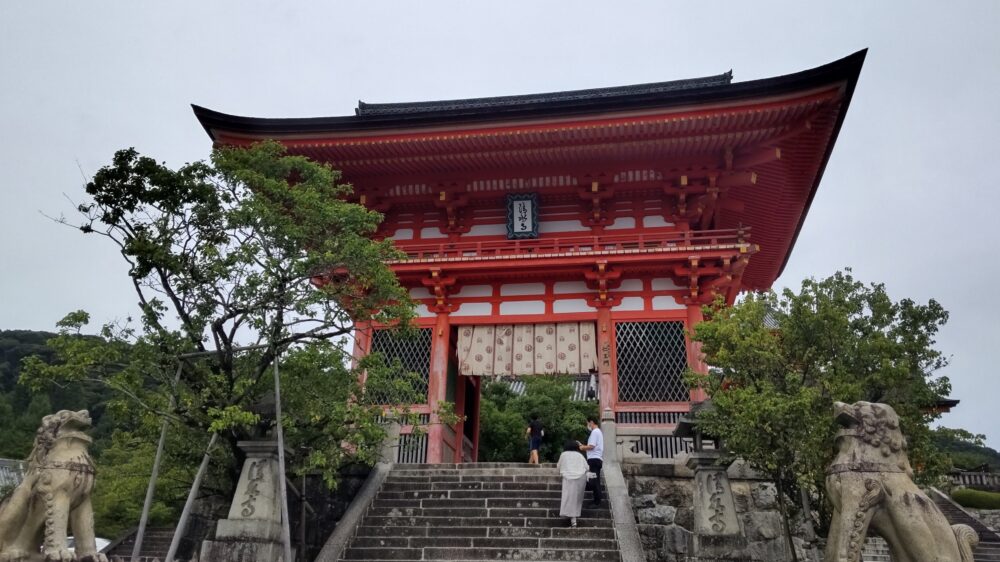
The Niomon Gate serves as the entrance to the Kiyomizudera Temple, which features a unique structure that blends elements of both Buddhist and Shinto traditions. This reflects the concept of “Shinbutsu Shugo,” the syncretism of Shinto and Buddhism.
In the foreground, two stone komainu, or lion dogs, guarding the entrance to the shrine, stand with their mouths open, symbolizing the loud proclamation of Buddha’s teachings to the world. Further inside, two wooden “Nio” statues, muscular guardians with fierce gazes, flank the vermilion temple entrance, acting as protectors of the sacred space.
Three-Storied Pagoda “Sanjunoto “
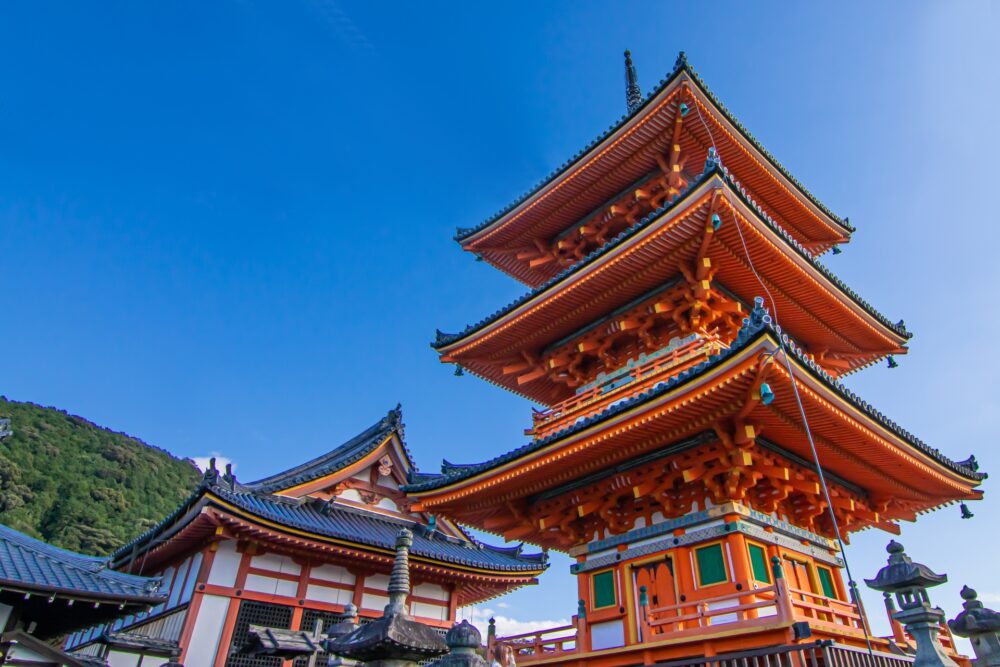
Through the Niomon Gate, the Three-storied Pagoda rises majestically. This pagoda was built in 847 by Prince Takaoka, son of Emperor Kanmu, and rebuilt in 1632. The pagoda stands approximately 31 meters tall, making it one of the tallest of its kind in Japan. In 1987, its original vibrant colors from the Momoyama period were meticulously restored, allowing visitors to marvel at its breathtaking beauty.
Mainhall “Butai”
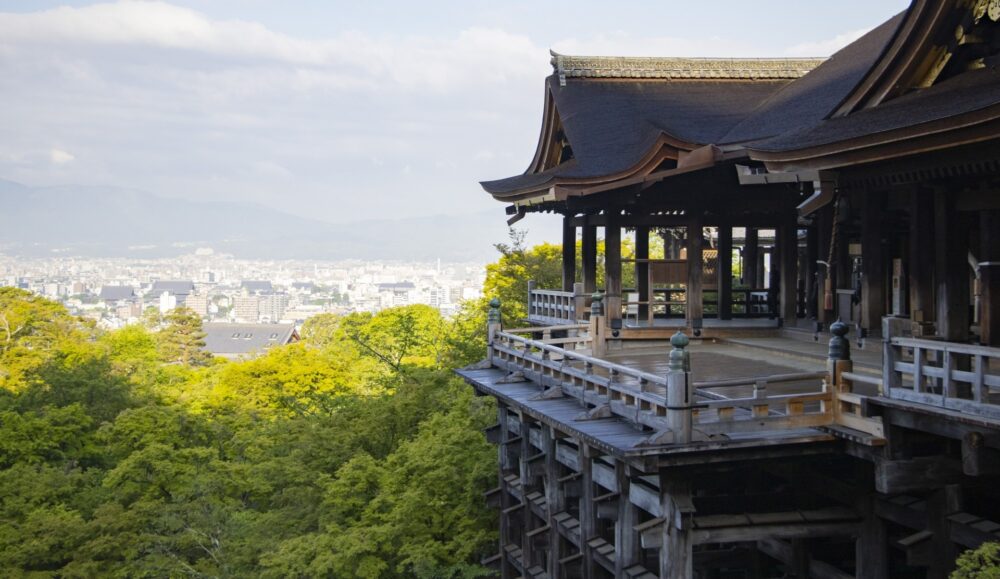
The Main Hall is a one-story wooden structure with a thatched roof and elaborate carvings and decorations inside. The wooden stage, located on the east side of the main hall, is supported by more than 130 pillars. The size of the stage is approximately 60ft(18m) high and 40ft(12m) wide, offering a panoramic view of Kyoto city.
Waterfall “Otowa no taki”
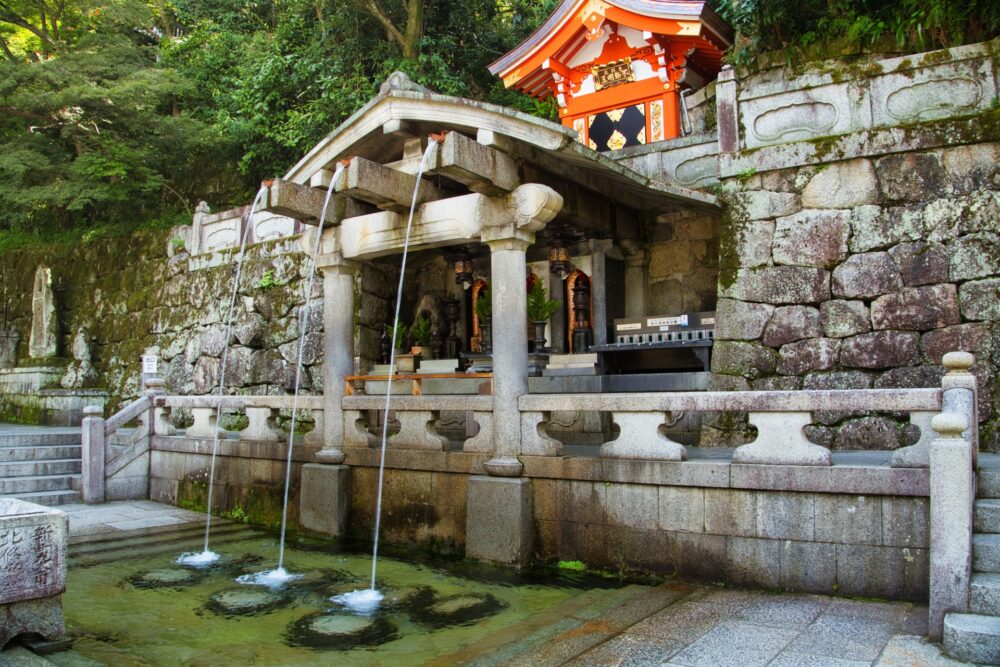
A Otowa no taki is a waterfall, located on a hillside in Kiyomizudera Temple. The waterfall is divided into three stream, each of which has different effect : a good for health, a good for longevity and a good for academic success. Visitors can use cup to catch the water from each water fall and drink it for benefit.
Sub-shrine “Jinshu shrine”
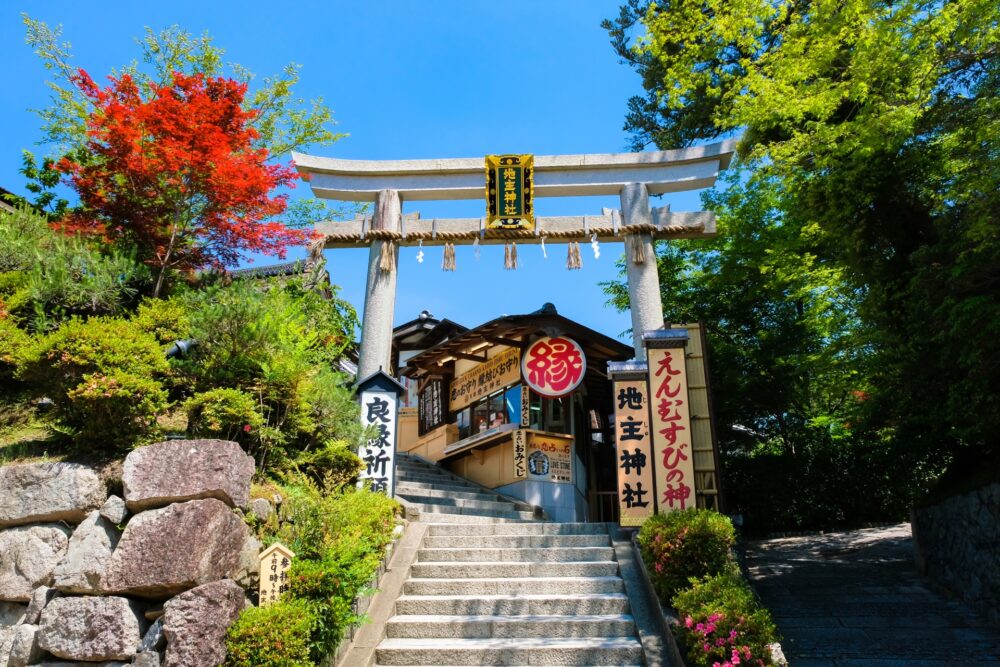
Jishu Shrine is a shrine located within the precincts of Kiyomizu Temple. Until the Edo period(1603 – 1867), it was known as the guardian shrine of Kiyomizu Temple, called Jishu Gongen Sha. It enshrines Okuninushi as the main deity and is popular among young women and couples as a spot for the god of matchmaking.Currently, it is under construction and entry is not permitted.
Jojuin temple
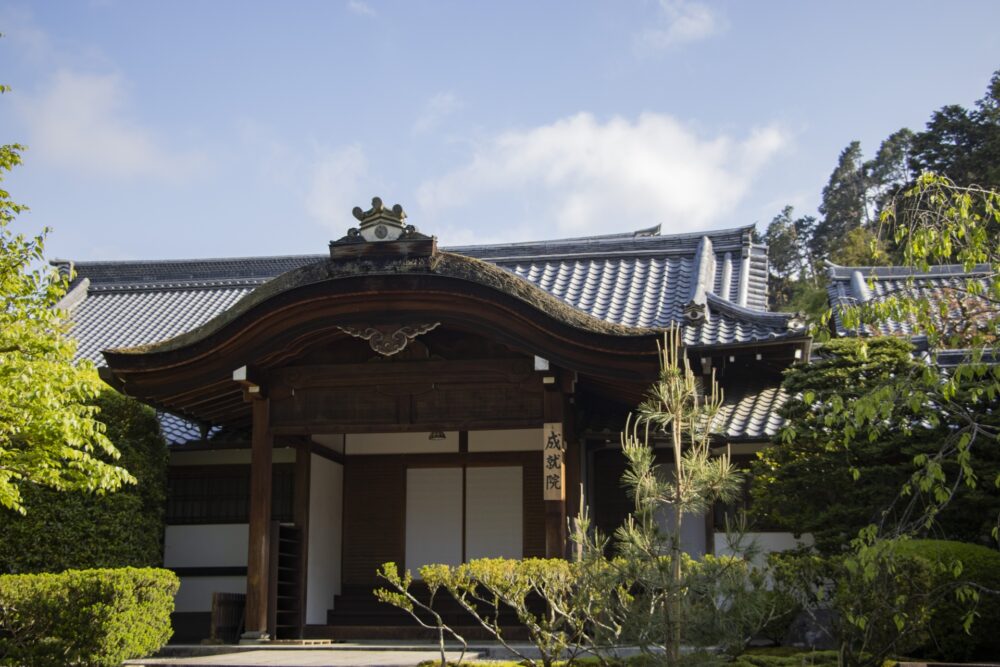
Jojuin temple is a sub-temple of Kiyomizu-dera, located on the west side of Kiyomizu-dera. To get there, before reaching the temple gate”Sanmon”, turn left and proceed up the stone steps. This temple is usually not open to the public, but is specially opened for a short period in spring and autumn each year. It was originally built as the residence of Gan-ashiōnin, who rebuilt Kiyomizu-dera after it was destroyed by the fires of the Ōnin War (1467 to 1477) through fundraising activities.
Since photography is prohibited in the garden, only a photo of the entrance is provided. The main hall overlooks a pond garden. The combination of rock arrangements and variouse type of azaleas is beautiful. The garden is quiet and peaceful as it is not crowded.
Information
①Kiyomizu-dera temple
Open hours
| Period | Time |
|---|---|
| Normal | 6:00a.m. – 6:00p.m. |
| Summer season (Jul.1 – Aug.31) | 6:00a.m. – 6:30p.m. |
| Special night viewing time (Mar.23th – Mar.31th)(Aug.14th – 16th)(Nov.18- Nov.30) | 6:00a.m. – 5:30p.m. (Day time) 6:30a.m. – 9:30p.m. (Night time) (9:00p.m. Last entry) |
※Temple is closed during after day time and before night time(5:30p.m. – 6:30p.m.)
Admission
| Ticket type | Price |
|---|---|
| Day time ticket ※Cannot be used as a Special night viewing ticket | Adults: 400 yen Children: 200 yen |
| Special night viewing ticket | Adults: 400 yen Children: 200 yen |
※Children is under 15 years of age.
②Jojuin temple
Open hours
| Period | Time |
|---|---|
| Autumn season Nov18th to Nov30th | 9:00a.m. – 4:00p.m. 6:00a.m. – 8:30p.m.(Special night viewing) |
Admission
| Ticket type | Price |
|---|---|
| Day time ticket ※Cannot be used as a Special night viewing ticket | ・Adults: 600yen ・Elementary and junior high school students: 300yen |
| Special night viewingticket | ・Adults: 600yen ・Elementary and junior high school studenst: 300yen |
Regular holiday
None
Address
1 Chome-294 Kiyomizu, Higashiyama Ward, Kyoto, 605-0862
It’s a 20-minutes walking from the nearest station : Keihan Line “Kiyomizu-Gojo” station to Kiyomizu-dera temple.
Link & Resorce
Official website
Kiyomizudera Temple(English text)
